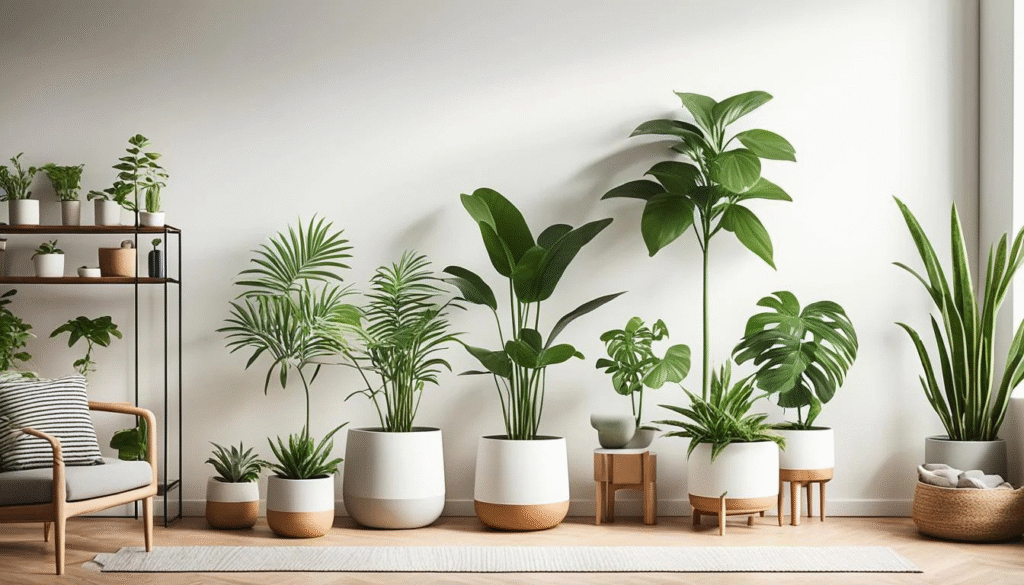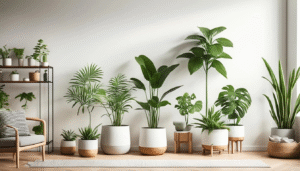The Joys of Indoor Plants: Bringing Greenery and Calm into Your Space
In an increasingly digitized and urbanized world, the longing for connection with nature often remains unspoken, yet deeply felt. For many, this innate desire finds its most accessible and fulfilling expression in the quiet companionship of indoor plants. Far more than mere decorative elements, these verdant inhabitants transform living spaces into tranquil sanctuaries, offering a myriad of benefits that extend from aesthetic enhancement to profound psychological well-being. The simple act of nurturing indoor plants brings a unique blend of joy, purpose, and a much-needed breath of fresh air into our daily lives.

Aesthetic Enhancement and Visual Vitality
One of the most immediate and undeniable joys of indoor plants is their ability to infuse any room with vibrant greenery and a touch of the outdoors. A strategically placed Monstera or a cascading Pothos can soften harsh architectural lines, add visual interest, and introduce a sense of vitality that artificial decor simply cannot replicate. They are living sculptures, constantly evolving, unfurling new leaves, and occasionally surprising us with a bloom. This dynamic beauty creates a more inviting and visually stimulating environment, transforming sterile corners into cozy nooks and brightening even the most mundane of spaces. Beyond aesthetics, this connection to nature, even in miniature, has been scientifically linked to reduced eye strain and improved concentration, making indoor plants ideal companions for home offices and study areas.
Natural Air Purification and Health Benefits
However, the benefits of indoor plants extend far beyond their visual appeal. They are silent purifiers of the air, diligently working to remove toxins and improve indoor air quality. Common houseplants like the Snake Plant, Spider Plant, and Peace Lily are renowned for their ability to absorb harmful volatile organic compounds (VOCs) such as formaldehyde and benzene, which can be emitted from furniture, cleaning products, and paints. This natural filtration process contributes to a healthier living environment, potentially leading to fewer respiratory issues and a general sense of well-being. The subtle increase in humidity also created by plants can be beneficial, particularly in dry climates or during winter months.
Therapeutic Presence and Mental Well-being
Perhaps the most profound joy derived from indoor plants, however, lies in the calm and therapeutic presence they bring. The act of tending to plants – watering, pruning, repotting, and observing their growth – can be a deeply meditative and grounding experience. It offers a gentle respite from the fast pace and demands of modern life, encouraging mindfulness and a connection to something tangible and alive. The rhythmic nature of plant care can reduce stress, lower blood pressure, and improve mood. For many, watching a new leaf unfurl or a bud open brings a quiet sense of accomplishment and wonder, fostering patience and a deeper appreciation for the cycles of life. This connection to a living entity, even a silent one, can combat feelings of loneliness and provide a sense of purpose, especially for those living alone or in confined spaces.
Conclusion: A Green Retreat for Mind and Body
In conclusion, the integration of indoor plants into our living spaces is a profound act of self-care and a testament to our innate need for nature. They are more than just green accents; they are active contributors to our physical health, mental clarity, and emotional well-being. The simple joys of nurturing a thriving plant, of witnessing its growth, and of breathing the fresher air it provides, collectively transform a house into a home and an urban dwelling into a serene retreat. In a world clamoring for our attention, the silent, steadfast presence of an indoor plant offers a quiet invitation to breathe, to connect, and to find a little piece of paradise within our own four walls.




















